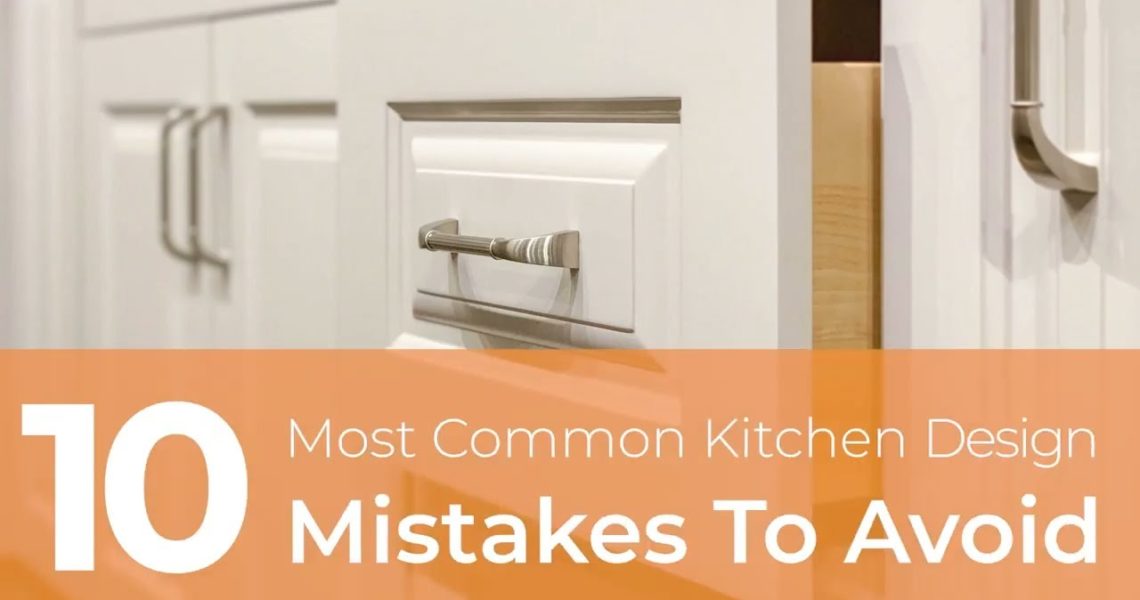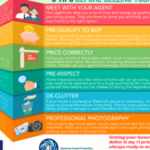10 Common Mistakes to Avoid in Your Kitchen Remodel
The kitchen, often referred to as the heart of the home, is a space where both culinary magic and memorable moments unfold. Embarking on a kitchen renovation can a rewarding journey, but without proper planning, it can quickly turn into a challenging endeavor. While the idea of a revamped space is enticing, it’s crucial to be aware of common pitfalls that many homeowners face. By understanding these challenges, you can ensure that your kitchen not only looks aesthetically pleasing but also functions efficiently for years to come.
Budgeting for Your Kitchen Remodel
The Pitfall: Diving headfirst into a kitchen renovation without a clear budget in mind. This often leads to overspending or compromising on essential features due to budget constraints.
Solution:
- Set a Clear Budget: Before initiating any renovation work, determine a budget that aligns with your vision and financial capacity. This will serve as a roadmap, guiding your decisions and preventing impulsive expenditures.
- Prioritize Essential Features: List down the features you deem most important for your kitchen. This could range from additional cabinet space, a kitchen island, enhanced lighting, or a designated pantry. Allocate a significant portion of your budget to these essentials.
- Regularly Monitor Expenses: As the renovation progresses, keep a close eye on your expenses. Regularly cross-check with your initial budget to ensure you’re on track. This proactive approach can help you make informed decisions if unforeseen costs arise.
Understanding Your Current Kitchen
The Pitfall: Overlooking the current layout and functionality of your kitchen. Many homeowners get so carried away with modern kitchen makeover ideas that they neglect the practicality and efficiency of their existing space.
Solution:
- Conduct a Detailed Inventory: Before making any drastic changes, take time to assess your current kitchen. Identify the appliances and features you use most frequently. Understand the traffic flow and pinpoint areas that feel congested or underutilized.
- Customize Based on Needs: Every family has unique kitchen habits. Whether it’s a penchant for baking, a need for a spacious breakfast nook, or a requirement for ample storage for gourmet gadgets, tailor your remodel to suit these specific needs. As Liz MacPhail, a renowned interior designer, suggests, understanding the “lifestyle specifics” of each family can make a world of difference in creating a custom kitchen that resonates with its users.
Importance of Lighting in Kitchen Remodeling
The Pitfall: Neglecting the multifaceted role of lighting in the kitchen. Many homeowners focus solely on aesthetic fixtures, overlooking the functional aspects of illumination.
Solution:
- Understand the Layers of Lighting: A well-lit kitchen caters to various activities, from cooking to dining and socializing. Bryan Johnson, CEO of Shades of Light, emphasizes the three layers of lighting:
- Ambient Lighting: This provides a diffused brightness, setting the overall tone of the room. Consider ceiling lights or chandeliers to achieve this effect.
- Task Lighting: Direct light focused on specific areas, aiding in activities like cooking or reading recipes. Pendant lights over islands or sconces above sinks are excellent examples.
- Decorative Lighting: Beyond functionality, let your personal style shine. Use decorative lights to highlight art pieces, architectural features, or even plants.
- Balance Style with Function: While trendy fixtures can elevate the look of your kitchen, ensure they also serve a practical purpose. A beautiful chandelier is of little use if it leaves your prep area in the shadows.
Material Selection
The Pitfall: Opting for materials based solely on appearance, without considering durability and maintenance. For instance, while marble countertops are undeniably elegant, they can be prone to stains and chips.
Solution:
- Research and Prioritize Quality: Before finalizing materials, delve into their pros and cons. Nina Magon, founder of Nina Magon Studio, advises against using marble if you frequently entertain or cook, as substances like red wine can stain it. Instead, she suggests investing in high-quality materials that resist wear over time.
- Seek Expert Opinions: Engage with interior designers or material suppliers. Their insights can guide you towards choices that combine aesthetics, durability, and ease of maintenance.
Painting Kitchen Cabinets
The Pitfall: Embarking on a DIY painting spree without adequate preparation or knowledge. While painting can refresh the look of your cabinets, improper techniques can lead to peeling or uneven finishes.
Solution:
- Consult Professionals: Devin Shaffer, Lead Interior Designer at Decorilla Online Interior Design, warns against hastily painting expensive cabinetry. If budget constraints prevent replacing old cabinets, consider professional painting services to ensure longevity and a polished look.
- Quality Over Quick Fixes: If you do decide to paint the cabinets yourself, invest in high-quality paints and primers. Take the time to clean, sand, and prime surfaces for optimal results. Remember, a rushed job can lead to more expenses in the long run.
Storage Considerations
The Pitfall: Overlooking the importance of adequate storage. A common oversight is focusing on aesthetics and neglecting the functional aspect of where and how kitchen items will be stored.
Solution:
- Analyze Daily Routines: Understand your daily kitchen activities. Karen Gutierrez, Interior Designer at Mackenzie Collier Interiors, emphasizes the importance of being aware of your routine. This ensures that the design is both functional and aesthetically pleasing.
- Maximize Vertical Space: Utilize wall-mounted racks, magnetic knife strips, and tall cabinets to make the most of available space. Consider pull-out pantries or rotating corner shelves to access items with ease.
- Customized Storage Solutions: Tailor storage based on specific needs. If you have an extensive collection of spices, design a dedicated spice drawer. For avid bakers, allocate space for baking sheets, mixers, and ingredients.
Space Management in Kitchen
The Pitfall: Not optimizing the available space. Even with a plethora of modern appliances and fixtures, if maneuvering around the kitchen becomes a challenge, the remodel loses its effectiveness.
Solution:
- Ensure Sufficient Clearance: Ezra Laniado of Landmark Construction Crew points out a common mistake where refrigerator doors hit the island countertop due to inadequate walkway space. Always measure appliances and ensure they fit perfectly, considering door swings and pull-out mechanisms.
- Open Floor Plans: Consider open shelving or glass-front cabinets to create an illusion of space. An open floor plan can also facilitate better movement and interaction.
- Island Efficiency: If space permits, a kitchen island can be a game-changer. Ensure it’s positioned to not obstruct the flow but enhance functionality, providing additional prep space, storage, or seating.
The Kitchen Work Triangle
The Pitfall: Ignoring the fundamental principle of the kitchen work triangle. The efficiency of a kitchen often revolves around the strategic placement of the sink, stove, and refrigerator.
Solution:
- Prioritize Functionality: The work triangle’s concept ensures that the primary areas of activity are close enough for convenience but not so close that they become restrictive. Devin Shaffer highlights the importance of this triangle, noting that a well-planned layout can significantly reduce legwork and enhance cooking efficiency.
- Avoid Obstructions: Ensure that there are no major obstructions, like islands or tall units, within the triangle. This allows for unhindered movement between these key points.
- Flexible Design: While the work triangle is a time-tested concept, modern kitchens sometimes require flexibility. If you have additional key areas, like a coffee station or baking counter, consider how they fit into the overall flow.
Inadequate Circulation Space
The Pitfall: Not providing enough circulation space, leading to a cramped kitchen. This restricts the number of people who can use the space comfortably at the same time.
Solution:
- Optimize Layout: Ensure that the kitchen layout allows for easy movement. Jenefer Gordon, principal at interior design firm Eat Bathe Live, emphasizes the importance of adequate circulation, especially if the kitchen doubles as a thoroughfare.
- Island Placement: If you have a kitchen island, ensure it’s placed in a way that doesn’t obstruct the flow but enhances circulation.
- Open Floor Concept: Consider breaking down unnecessary walls or barriers to create an open floor concept, allowing for better movement and interaction.
Cabinet Depth and Height Considerations
The Pitfall: Overlooking the depth of upper cabinets. Elizabeth Graziolo from Yellow House Architects points out that many cabinets can’t accommodate larger plates, like a 13-inch platter.
Solution:
- Measure Before Installing: Ensure your upper cabinets are deep enough to store larger items. This not only includes plates but also other kitchen essentials that might require more depth.
- Maximize Vertical Space: If your kitchen ceiling height is under 11 feet, consider extending the kitchen cabinets all the way to the ceiling. This provides additional storage and creates a seamless look.
- Adjustable Shelves: Opt for cabinets with adjustable shelving. This allows you to modify the space based on your storage needs, accommodating both tall and short items.
Failing to Plan
The Pitfall: Jumping into a kitchen renovation without a comprehensive plan. Michael Menn, a renowned architect and homebuilder, believes that the biggest mistake homeowners make is not planning adequately.
Solution:
- Consult with Experts: Before starting the renovation, consult with architects, interior designers, or kitchen specialists. Their expertise can guide you in creating a cohesive and functional design.
- Visualize the End Result: Use design software or sketches to visualize the final look. This helps in identifying potential issues before they arise.
- Timeline and Budget: Establish a clear timeline for the renovation. Factor in potential delays and set aside a contingency budget for unforeseen expenses.
Closing Thoughts
A kitchen remodel is more than just a home improvement project; it’s an investment in enhancing the heart of your home. As we’ve navigated through the common pitfalls and their solutions, it’s evident that the key to a successful kitchen renovation lies in a harmonious blend of aesthetics, functionality, and meticulous planning.
While the allure of modern designs and trendy fixtures can be enticing, it’s essential to prioritize practicality and long-term value. By being aware of common mistakes and proactively addressing them, homeowners can ensure a smoother renovation journey, resulting in a kitchen that resonates with their unique needs and lifestyle.
Moreover, the insights shared in this guide serve as a testament to the importance of research, consultation, and foresight. Whether it’s optimizing the kitchen work triangle, ensuring adequate lighting, or selecting the right materials, each decision plays a pivotal role in crafting a space that’s both beautiful and efficient.
In closing, remember that every kitchen, like its homeowner, is unique. While guidelines and expert opinions are invaluable, it’s your personal touch, preferences, and memories that will truly make the space your own. So, as you embark on this exciting journey of kitchen remodeling, cherish the process, learn from challenges, and look forward to countless memories in your newly renovated space.






